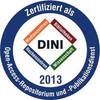PDF, English
 Restricted access: Repository staff only until 20 July 2026. Restricted access: Repository staff only until 20 July 2026.
Login+Download (16MB) | Terms of use |
Abstract
RNA folding is at the center of multiple cellular processes. The inherent ability of RNA to fold allows the binding of multiple proteins to form large macromolecular machines like ribosomes that are required for gene expression. During ribosome assembly, the ribosomal RNA (rRNA) is transcribed, chemically modified, and processed, and it undergoes folding to form complex secondary structures and tertiary interactions, which enable the binding of ribosomal proteins (r-proteins). The process is highly dynamic and follows multiple parallel pathways to produce ribosomes. The co-transcriptional folding of rRNA is susceptible to forming non-native RNA structures, increasing the heterogeneity of the assembly landscape. The rRNA folding landscape is modulated by assembly factors, r-proteins and their chaperoning activity. Several assembly factors assist the assembly by specifically acting on individual pathways during different stages of assembly.
In my PhD thesis, I have investigated the co-transcriptional folding dynamics of the 3’ domain of the 16S rRNA of E. coli during ribosome assembly by developing state-of-the-art single-molecule assays to gain mechanistic insights into this process. Tracking co-transcriptional rRNA folding dynamics is challenging because it is difficult to distinguish the functional molecules from non-native conformations in the heterogeneous RNA conformational ensemble. I have developed assays to simultaneously monitor in real-time transcription elongation and rRNA structure formation and, in addition, assess the function of each RNA molecule by r-protein binding as a functional readout for native RNA structure. Capturing the entire ensemble of molecules, I observe functionally active and misfolded molecules. Clustering of the molecules based on RNA folding dynamics revealed rRNA folding classes that not only highlighted the differences in the functional molecules but also showed different types of misfolded molecules and their dynamics, which had not been reported before.
Subsequently, I investigated the effect of anti-sense oligonucleotides to artificially modulate RNA folding classes and various endogenous factors like r-protein and assembly factors on rRNA folding dynamics, which have been challenging to assess on nascent rRNA. I showed that anti-sense oligonucleotide binding to helix 31 of the 16S rRNA strongly disrupted the local and global RNA structure and initiation of ribosome assembly by r-protein S7. In contrast, secondary r-proteins caused increased flexibility of the helix 30 region on 16S rRNA, which is surrounded by their binding site, and increased the fraction of functional RNA molecules. Here, I propose a localized chaperoning mechanism to prevent rRNA misfolding. Additionally, while assembly factors like RsmB and RsmD reduced specific types of RNA molecules misfolded at the helix 30 region and subtle reduction in functional molecules, RimM had no observable effect on the helix 30 region. Monitoring the binding kinetics of RsmD, I demonstrate that the chaperoning activity of r-proteins, rather than their persistent stable association with the RNA, is sufficient for RsmD to bind.
Finally, I expanded the assays to detect co-transcriptional RNA accessibility at multiple sites simultaneously and correlate it with function by monitoring 5 dyes at the same time, generating a first-of-its-kind 5-color single-molecule dataset. With this technical advancement, I have directly visualized the complex behavior of different regions on the same RNA molecule and highlighted the heterogeneity in the dynamic RNA folding landscape displayed by the presence of at least 8 different RNA folding classes. I show that different regions that I investigated on the same RNA molecule fold independently from each other, and I further characterized the behavior of a subset of misfolded RNA molecules.
The findings from my PhD shed light on the effect of individual factors acting during ribosome assembly on the co-transcriptional rRNA folding and ribosome assembly initiation. In the process, I have made methodological advancements that provide a potent tool for studying the general mechanisms of ribonucleoprotein (RNP) complex assembly and modulating them for potential future RNA-targeting drug development.
| Document type: | Dissertation |
|---|---|
| Supervisor: | Duss, Dr. Olivier |
| Place of Publication: | Heidelberg |
| Date of thesis defense: | 21 July 2025 |
| Date Deposited: | 11 Aug 2025 09:31 |
| Date: | 2026 |
| Faculties / Institutes: | The Faculty of Bio Sciences > Dean's Office of the Faculty of Bio Sciences |
| DDC-classification: | 500 Natural sciences and mathematics 570 Life sciences 600 Technology (Applied sciences) |
| Controlled Keywords: | Single-molecule imaging (6-colors), RNA folding and misfolding dynamics, Advanced multi-color microscopy methods, Ribosome assembly, RNA chaperones |









